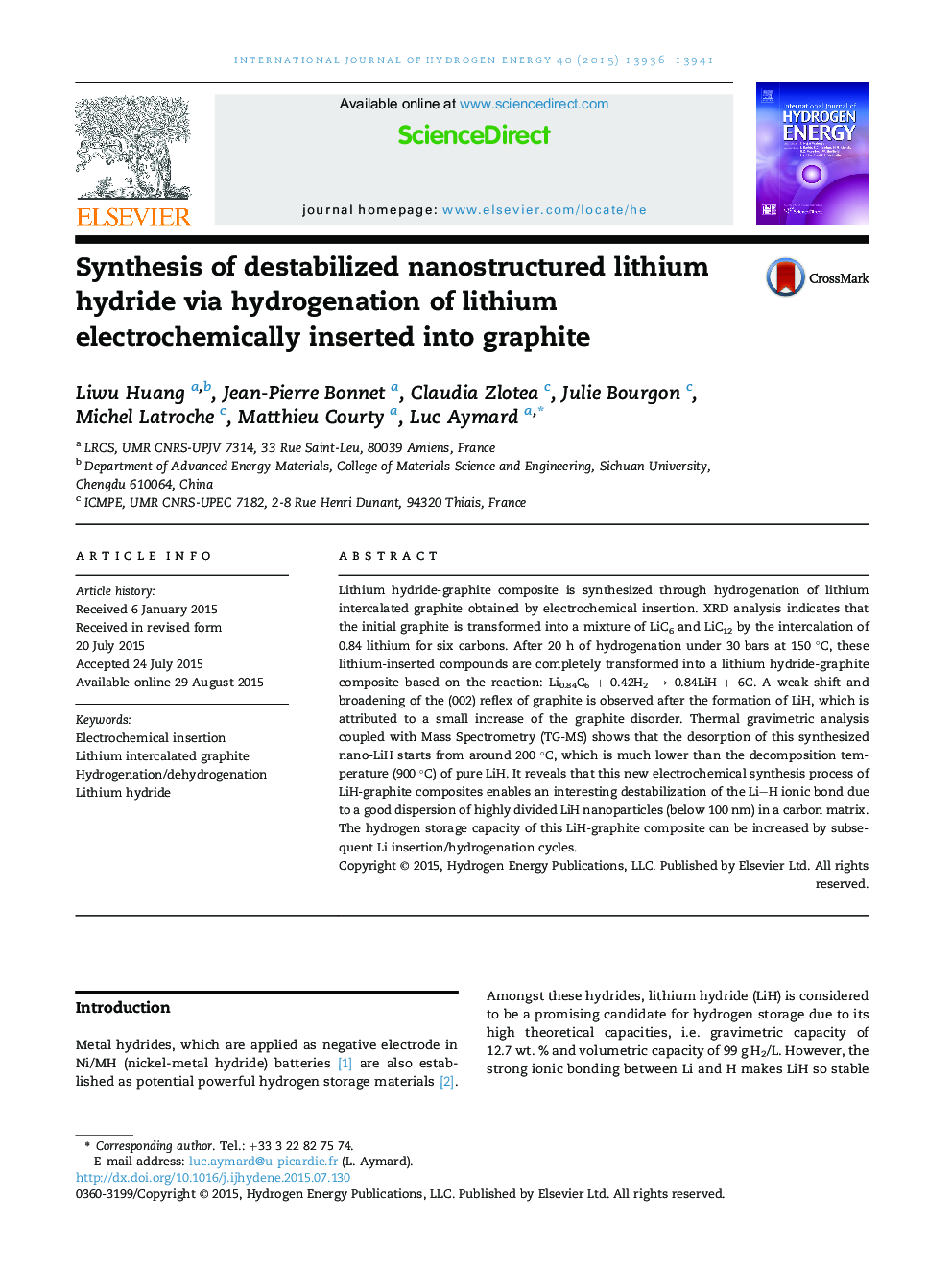| Article ID | Journal | Published Year | Pages | File Type |
|---|---|---|---|---|
| 1270451 | International Journal of Hydrogen Energy | 2015 | 6 Pages |
•Nano LiH/C composite is synthesized by hydrogenation of lithium intercalated graphite.•Lithium intercalated graphite is prepared by electrochemical insertion.•LiH nanoparticles (below 100 nm) are dispersed in a graphite matrix.•Nano LiH/C releases H2 from around 200 °C, much lower than that (900 °C) of pure LiH.
Lithium hydride-graphite composite is synthesized through hydrogenation of lithium intercalated graphite obtained by electrochemical insertion. XRD analysis indicates that the initial graphite is transformed into a mixture of LiC6 and LiC12 by the intercalation of 0.84 lithium for six carbons. After 20 h of hydrogenation under 30 bars at 150 °C, these lithium-inserted compounds are completely transformed into a lithium hydride-graphite composite based on the reaction: Li0.84C6 + 0.42H2 → 0.84LiH + 6C. A weak shift and broadening of the (002) reflex of graphite is observed after the formation of LiH, which is attributed to a small increase of the graphite disorder. Thermal gravimetric analysis coupled with Mass Spectrometry (TG-MS) shows that the desorption of this synthesized nano-LiH starts from around 200 °C, which is much lower than the decomposition temperature (900 °C) of pure LiH. It reveals that this new electrochemical synthesis process of LiH-graphite composites enables an interesting destabilization of the Li–H ionic bond due to a good dispersion of highly divided LiH nanoparticles (below 100 nm) in a carbon matrix. The hydrogen storage capacity of this LiH-graphite composite can be increased by subsequent Li insertion/hydrogenation cycles.
Graphical abstractA lithium hydride-graphite (LiH–C) composite is synthesized through hydrogenation of lithium intercalated graphite compounds electrochemically obtained. The LiH particles present an average size below 100 nm and are dispersed in the graphite matrix. This characteristic structure destabilizes the LiH and enables a hydrogen desorption from around 200 °C.Figure optionsDownload full-size imageDownload as PowerPoint slide
